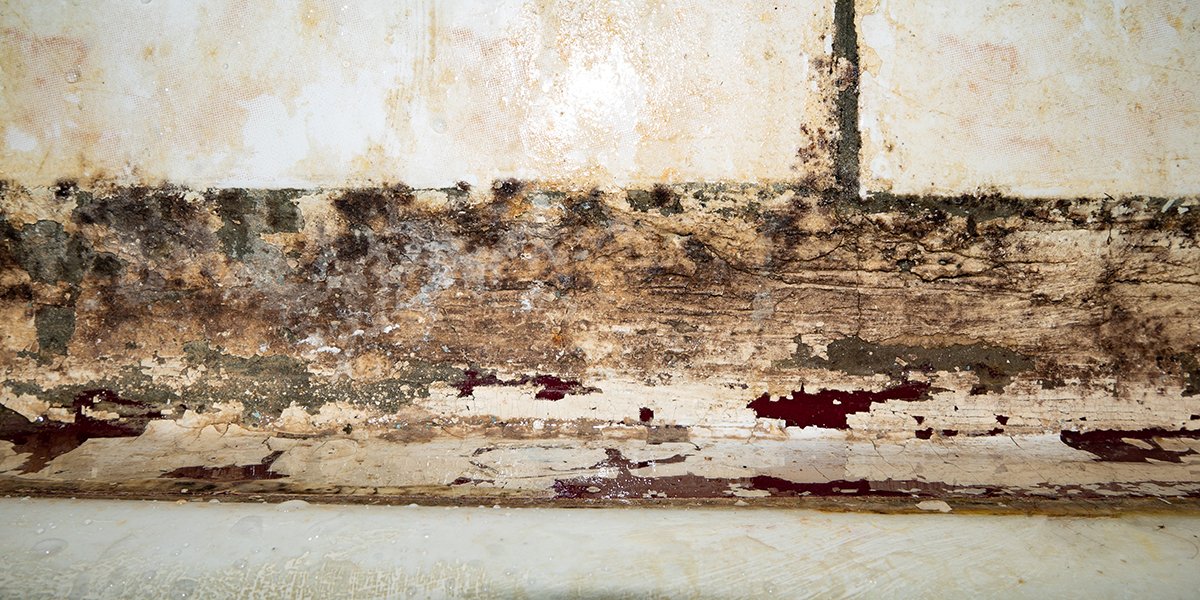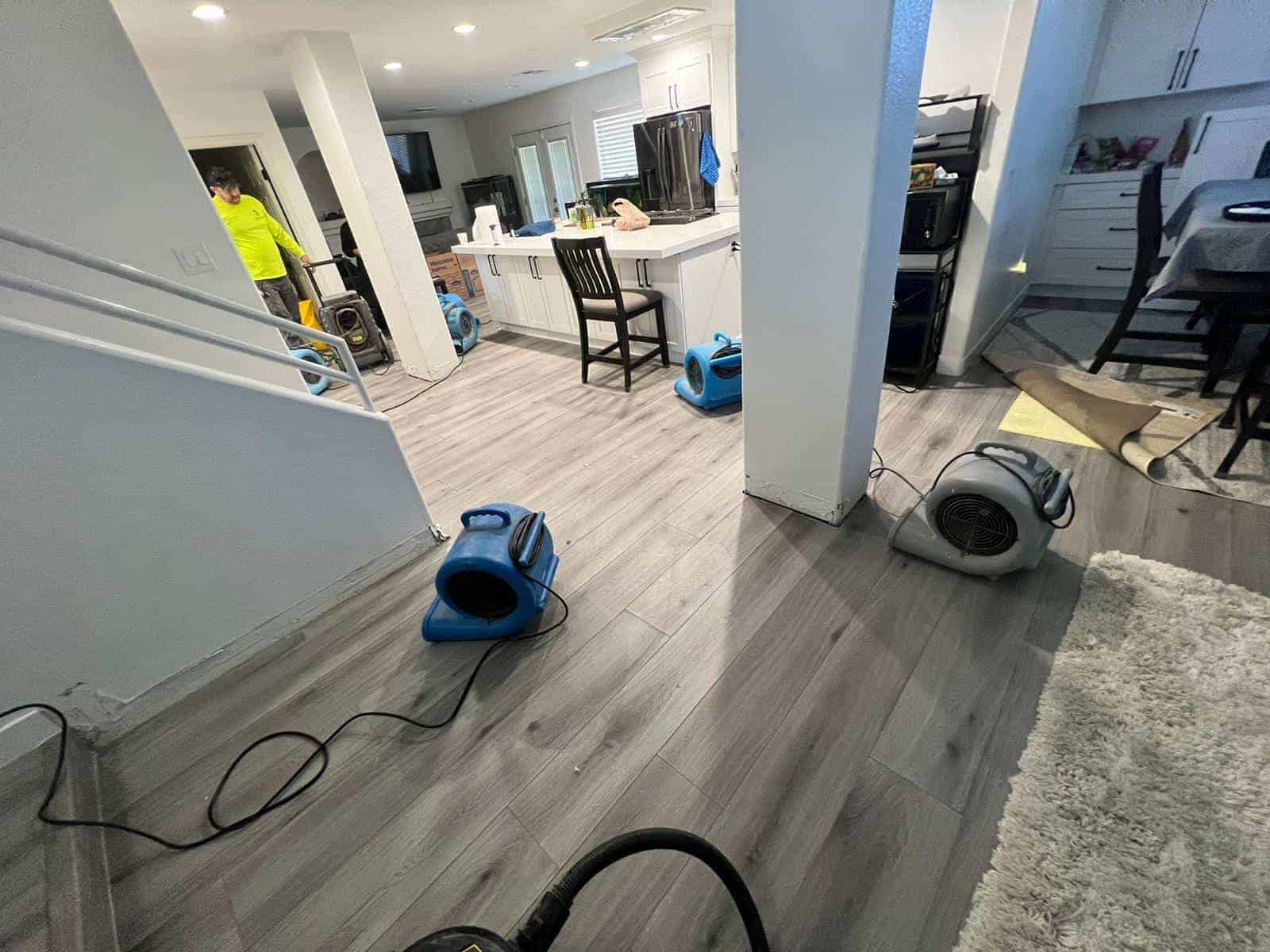The Process of Water Damage Clean-up: Guaranteeing Your Home Is Restored Efficiently
Water damages can be an overwhelming obstacle for home owners, demanding a careful and organized clean-up procedure to restore security and functionality. A detailed assessment is vital to determine the level of the damage and identify the appropriate remediation measures. Following this, efficient water removal strategies play a crucial function in alleviating more harm. However, the subtleties of drying out, sterilizing, and ultimate restoration are just as vital and frequently neglected. Comprehending these phases can make a substantial distinction in the outcome of your home's repair, prompting a closer consider what each step requires.
Evaluating the Damage
Upon finding water damages, the very first step is to extensively evaluate the level of the impact. This preliminary assessment is essential, as it aids determine the needed steps for efficient cleaning and repair. Begin by inspecting the affected locations, consisting of wall surfaces, ceilings, floorings, and individual valuables, to determine the source of the water breach, whether from flooding, leaks, or condensation.
Recording the damages is essential for both insurance cases and intending repair efforts - damage restoration services. Use photographs and written notes to capture the extent of the damages, noting any kind of affected architectural elements and products. Pay special attention to areas that might not be quickly visible, such as behind walls and under carpets, as concealed wetness can result in further issues, consisting of mold development
Additionally, examine the timeline of the water direct exposure. Eventually, a comprehensive evaluation lays the foundation for an effective water damages cleanup procedure, making certain that all impacted locations are attended to efficiently and completely.
Water Removal Techniques

Professionals typically employ submersible pumps for larger volumes of water, which can rapidly alleviate flooding in basements or other affected locations. For smaller amounts, wet/dry vacuums are often used to extract recurring moisture from carpetings and tough surface areas. In addition, utilizing mobile extractors permits for targeted elimination in restricted areas or areas with fragile products.
In instances of contaminated water, such as sewage or floodwater, progressed extraction techniques may entail making use of biohazard tools to make certain safety and conformity with wellness guidelines. High-powered extraction tools are important in reducing water retention in structural products, which can cause mold and mildew growth and structural damage if not dealt with without delay.
Ultimately, the effectiveness of water removal methods plays a crucial duty in the general success of the water damage cleaning procedure, preparing for subsequent restoration initiatives.
Drying and Dehumidification
When standing water has actually been efficiently extracted, the following vital phase in the water damages cleanup process is drying out and dehumidification. This step is important to stop additional damages and mold development, which can happen within 24 to 2 days in wet environments.
To attain effective drying out, specialized devices such as industrial-grade air movers and dehumidifiers is utilized. Air moving companies circulate air throughout damp surface areas, boosting evaporation rates, while dehumidifiers minimize humidity levels in the air, advertising a conducive atmosphere for drying. The combination of these devices makes sure that wetness is attracted out from floors, furnishings, and wall surfaces, permitting them to dry completely.
It is necessary to keep track of the drying procedure closely. Experts usually use wetness meters to evaluate the dampness web content in various materials, guaranteeing that all affected locations get to appropriate dry skin degrees. This meticulous approach assists to stop concealed dampness pockets that might cause architectural damages or harmful mold and mildew development.

Cleaning and Disinfecting
After the drying and dehumidification stage is total, the following vital action in water damages cleaning is cleansing and sterilizing the impacted areas. This process is critical to protect against the development of mold and mildew, germs, and other microorganisms that prosper in moist environments.
The cleaning stage commonly includes getting rid of any kind of particles, dirt, and contaminants from surface areas utilizing specialized cleansing agents. For hard surfaces, a combination of soap and water or industrial cleaning items is commonly employed. Soft materials, such as furniture and rugs, may call for much more substantial cleansing techniques, consisting of heavy steam cleaning or deep removal methods, to guarantee extensive sanitation.

Disinfecting adheres to cleansing, utilizing EPA-approved anti-bacterials to eliminate dangerous Find Out More microorganisms. This action is necessary, particularly in locations that may have entered into call with floodwaters or sewer, as these resources can present serious health and wellness risks.
Additionally, it is necessary to resolve any type of continuing to be odors, which may need the use of smell neutralizers or sophisticated techniques like ozone therapy. Proper cleansing and disinfecting not just restore the safety and security and hygiene of your home yet additionally prepared for successful remediation and repair services in succeeding phases of the water damages clean-up procedure.
Remediation and Repair Services

As soon as the analysis is complete, repair efforts can begin. This usually includes fixing or changing broken products, guaranteeing that all job abides by neighborhood building regulations and requirements. As an example, if drywall has been jeopardized, it will require to be gotten rid of and replaced with brand-new material. Additionally, floor covering might need similar attention, depending on the degree of water exposure.
It is vital to involve seasoned repair professionals during this process, as they possess the experience to manage complex repair services efficiently. Furthermore, they can assist mitigate potential future issues, such as mold and mildew growth or structural instability, hence guaranteeing a safe and habitable living atmosphere. Eventually, effective reconstruction and repair work restore the home's integrity and improve its total value.
Final Thought
To conclude, the process of water damage cleaning is vital for bring back a home to its pre-damage condition. Each stage, from assessing the damages to applying efficient water removal techniques, adhered to by comprehensive drying out, sanitizing, and essential fixings, plays a crucial role in making sure security and compliance with structure requirements. Efficient execution of these steps not only mitigates instant damages however likewise improves the lasting integrity and worth of the property.
Water damage can be a daunting obstacle for house owners, necessitating a meticulous and structured clean-up procedure to recover safety and performance. Ultimately, a comprehensive analysis lays the foundation for a successful water damages cleanup procedure, making sure that all influenced areas are dealt with effectively and extensively.
Efficient water extraction methods are important in reducing damages and preventing more issues complying with a water intrusion event.In verdict, the process of water damages cleanup is vital for bring back a home to its pre-damage problem. Each why not try these out stage, from examining the damages to implementing efficient water removal strategies, followed by complete drying out, disinfecting, and essential repairs, plays an important duty in guaranteeing security and compliance with building requirements.